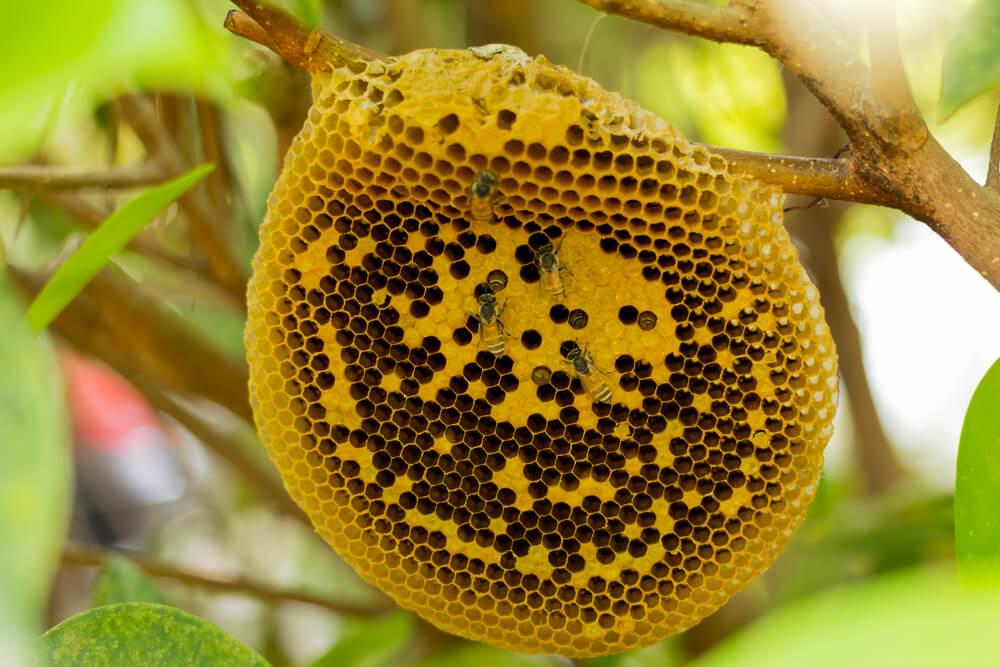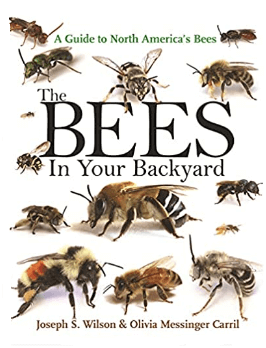Table of Contents:
How Do Honey Bees Make Hives?
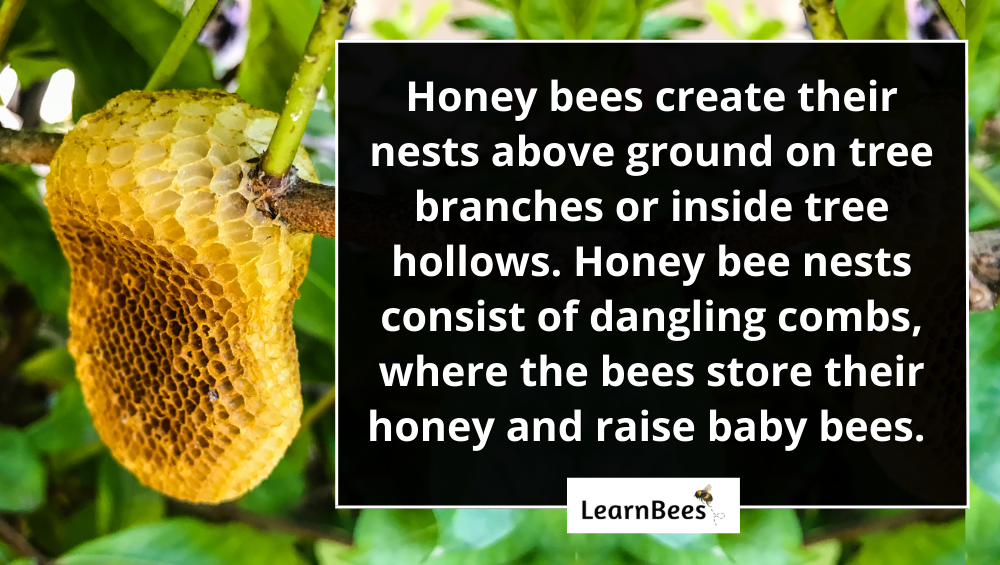
Wild honey bees build their hives above ground on tree branches or inside tree hollows.
But keep in mind:
There’s a difference between wild honey bee colonies and managed honey bee colonies.
Wild honey bee colonies are bees that have built hives in natural settings not managed by beekeepers.
Managed honey bee colonies live inside beehives kept by beekeepers.
Most manmade beehives look like wooden boxes stacked on top of each other. Beekeepers use them to harvest honey and beeswax quickly and easily.
And speaking of honey and beeswax?
This is what makes honey bees so unique.
Honey bees are the only type of bee that produces honey and beeswax on a mass scale for human use. In fact, there are over 20,000 bee species, and most of them don’t produce honey, wax, or even nest above ground.
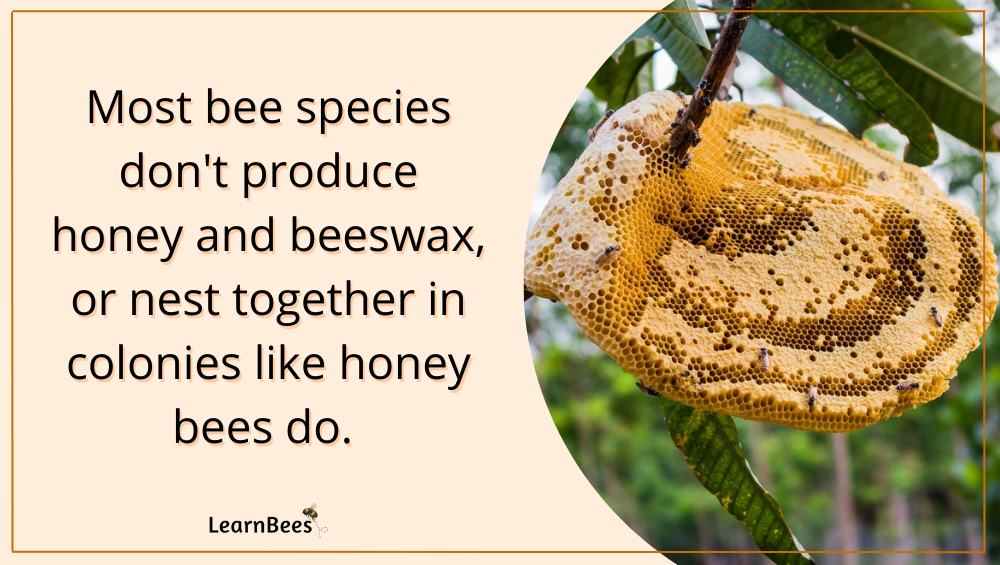
That’s right.
A whopping 70% of bee species nest underground.
For example, bumble bees nest in empty rodent holes, dense vegetation, or rock piles. Leafcutter bees nest underground in pre-existing cavities or holes they dig themselves.
But honey bees are different.
They make their nests above ground using beeswax and propolis.
Beeswax is shaped into hexagonal cells that hold the baby bees and honey. In turn, propolis is like the glue that holds everything together. It helps the bees seal cracks and smooth rough surfaces.
And the cool part?
Beeswax is made by worker honey bees using eight special wax-producing glands on their abdomens.
But honey bees are small insects with short lifespans, so it takes thousands of honey bees working together to build the hive.
What Do Honey Bees Do in Hives?
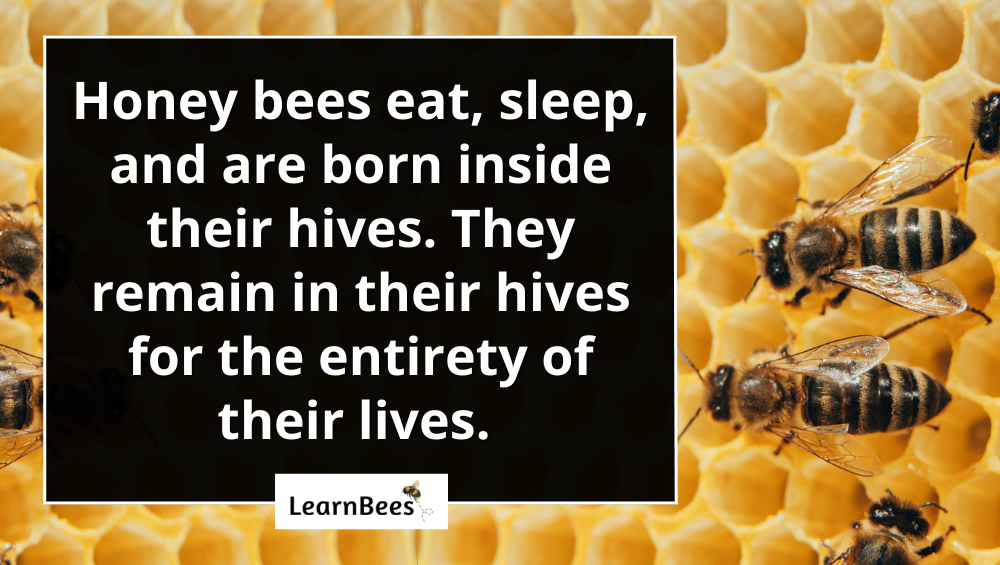
Honey bee colonies are like well-oiled machines.
The goal of the honey bee colony is to survive and reproduce. Each honey bee colony generally consists of one queen, hundreds of drone bees (male), and thousands of worker bees (female).
In total, a single honey bee colony can contain upwards of 50,000 bees.
More importantly?
Each bee plays a vital role in the nest.
For instance, queen honey bees spend most of their time inside the hive. They rarely leave, and if they do, they typically don’t go very far.
Why?
Because honey bee queens keep themselves busy inside the nest by laying thousands of eggs daily. This vital role ensures the future generation of honey bees.
As for worker honey bees?
They do a lot of the heavy lifting for the hive.
Worker honey bees do almost everything except mate and lay eggs. This includes leaving the hive to collect food and water, making honey and wax, tending to the queen and baby bees, and defending the nest.
Drone honey bees (males) have a simple yet essential job of mating with queens from other colonies.
Do All Bees Live in Hives?
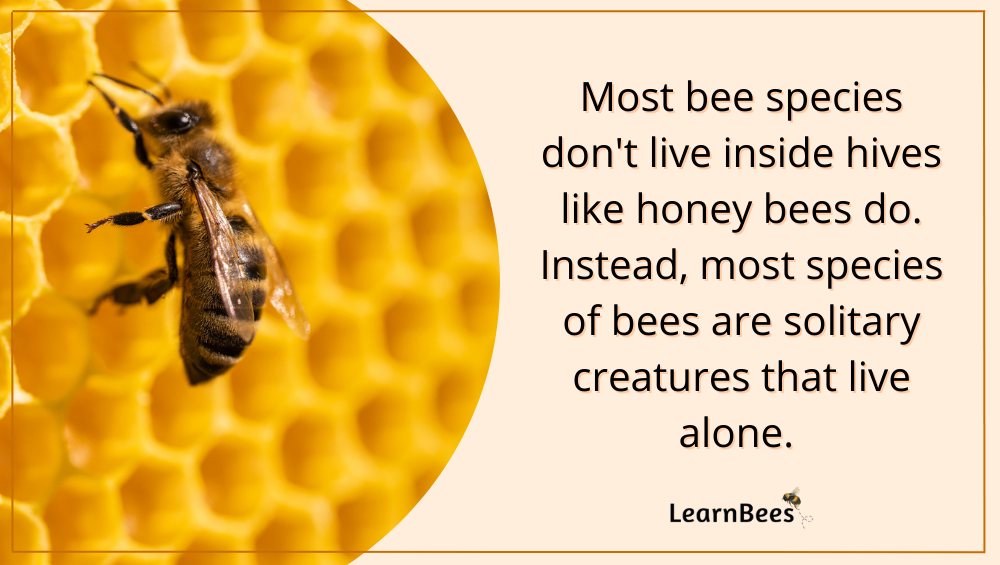
Most bee species are solitary bees that live alone. They don’t live in colonies like honey bees do.
Remember:
There are over 20,000 different bee species, each with varying nesting and lifestyle habits.
Honey bees are a common example simply because they’re so prevalent.
Not to mention?
Beekeeping is a popular hobby, with over 100,000 beekeepers in the US alone. To take it a step further, managed honey bee hives can be found on every continent except Antarctica.
Honey bees are sought after for their pollination services, honey, and beeswax. The honey industry is worth nearly 9 billion dollars and is only expected to increase from there.
But that still doesn’t mean all bees live inside hives.
As mentioned, most bee species aren’t social creatures. Instead, they build single nests for themselves and their offspring.
Examples of solitary bees include carpenter bees, mason bees, sweat bees, and leafcutter bees.
FAQs on Hives of Honey Bees
- What kind of hives do bees make?
- Why do bees make hives in houses?
- Do honey bees have natural hives?
- What are beehives made of on the outside?
- How do bees make hives in trees?
- How long do bees stay in a hive?
- What is a group of bee hives called?
- What is the most common bee hive?
- Do bees only live in hives?
- What do bee hives look like?
- How do bee hives form?
- Can a hive survive without a queen?
- What happens to a hive without a queen?
What kind of hives do bees make?
“How many types of bee hives are there?” is a popular question we get.
When people refer to “bee hives,” they commonly talk about honey bees. However, they could also refer to other social bee species, such as bumble bees. Usually, they’ll specify to ensure their point is clear.
With that said, there are three main types of manmade honey bee hives:
- The Langstroth (most common)
- The top bar
- The Warre
Each manmade hive has its pros and cons, and you should learn the ins and outs of the hobby before investing in beekeeping equipment. We also recommend contacting local beekeepers who can advise you about your local climate and conditions.
In the wild, honey bees make hives using beeswax and propolis. Beeswax is a natural wax produced by worker bees to make comb. This is where they store food, raise their young, and protect the queen. Propolis is a sticky substance bees use to seal crevices in the hive.
—> Go back to the FAQs on hives of honey bees
More to Explore:
Why do bees make hives in houses?
Honey bees may create hives inside houses or sheds for several reasons.
One common reason is that the bees lack a suitable shelter outside. Honey bees generally strive to build hives in locations sheltered from the elements and predators.
A honey bee colony faces many predators because they produce honey. As such, they rely on safe environments that shield them from potential threats.
The environment inside your home or shed may be more appealing than outside, so they set up shop there. This is especially true in urban settings with limited trees and forests.
It’s also possible that they’ve found a way into your home and just found the right spot for their hive. This can happen even if you live close to a wooded area.
If you find a bee hive in your home, contact a local beekeeper as soon as possible. They can help safely remove the bees and relocate them to a more suitable location. Additionally, most beekeepers will relocate the nest for free.
—> Go back to the FAQs on hives of honey bees
More to Explore:
Do honey bees have natural hives? How do bees make hives in the wild?
Wild honey bees do build natural hives in forested areas. They build their hives on tree branches or inside large tree cavities and crevices.
These hives are made up of beeswax comb, which worker bees use to form hexagonal cells for honey storage and bee brood. The comb is coated with propolis – a sticky substance that the bees use to seal off cracks.
Honey bees generally have a special section of the comb dedicated to honey, known as the “honeycomb.” They also have a separate section dedicated to raising young bees. This isn’t 100% set in stone, as some mix-ups can happen.
However, bees generally keep their honey and bee larvae separate.
—> Go back to the FAQs on hives of honey bees
More to Explore:
What are beehives made of on the outside?
Wild honey bee hives are made of beeswax and propolis on the outside, just like they are on the inside. The bees use these materials to create the entirety of their nest. This also helps protect them from weather and predators while allowing ventilation for the hive.
Manmade bee hives are usually made of wood that is pressure treated to withstand the natural elements. Plastic hives are also available, but they’re less popular.
—> Go back to the FAQs on hives of honey bees
More to Explore:
How do bees make hives in trees?
Honey bees generally build their hives in tree branches, cavities, or crevices. The beeswax comb forms hexagonal cells for honey storage and bee larvae. The comb is coated with propolis, a sticky substance that the bees use to fix cracks.
Tree branches are a popular spot for wild bee hives because they provide shelter from the elements and predators.
—> Go back to the FAQs on hives of honey bees
More to Explore:
How long do bees stay in a hive?
Honey bees live their entire lives inside a hive. A beehive can survive for years if the queen continues to lay eggs and the colony is healthy.
However, each individual bee has a limited lifespan and is replaced by future generations of bees. For example, queen honey bees have an average lifespan of two to three years. Worker bees usually live for about six weeks.
Therefore, the same hive can be home to multiple generations of honey bees. When conditions become less favorable, the colony may move on in search of a new home.
—> Go back to the FAQs on hives of honey bees
More to Explore:
What is a group of bee hives called?
A group of beehives managed by a beekeeper is called an apiary or bee yard. This is where beekeepers keep their hives and check on the health of their colonies. Apiaries should be located in areas with plenty of flowers to provide nectar for the bees and protection from predators.
—> Go back to the FAQs on hives of honey bees
More to Explore:
What is the most common bee hive?
The most common manmade hive is the Langstroth hive.
—> Go back to the FAQs on hives of honey bees
More to Explore:
- Ground Bees: Are They a Threat to Your Yard?
- Wasps vs. Honeybees: Are They Different?
- Do Bumble Bees Bite?
Do bees only live in hives?
No, most bee species live alone in nests they build on their own. Honey bees are unique in that they live in large, cooperative colonies and build their hives together. This type of bee hive is called a “social” nest, unlike the solitary nests constructed by other bee species.
—> Go back to the FAQs on hives of honey bees
More to Explore:
What do bee hives look like?
Wild beehives include several pieces of dangling comb that are made of beeswax. The comb is where the bees house their honey, eggs, larvae, and pupae. Honey bees produce beeswax by secreting it from glands on the underside of their abdomen.
Manmade hives usually consist of several wooden boxes stacked on top of one another, with frames or bars inside each box to hold the beeswax comb in place. This is the most popular type of manmade hive, known as the Langstroth hive.
—> Go back to the FAQs on hives of honey bees
More to Explore:
- Do Carpenter Bees Pollinate?
- How Long Do Bumble Bees Live?
- Honeybees vs. Bumblebees: How Do They Compare?
How do bee hives form?
Bee hives don’t form out of anywhere. Instead, when it’s time to reproduce, a honey bee colony will split in half in a process known as swarming.
The swarm will gather in a large clump on a nearby tree or another surface. From there, they’ll send out scout bees to find a new location to build their hive. Once they have found the right spot, they’ll start constructing the comb using beeswax and propolis.
After that, the queen can start laying eggs to increase the colony size.
—> Go back to the FAQs on hives of honey bees
More to Explore:
- Do Queen Bees Eat Honey?
- Are Worker Bees Male or Female?
- Queen Bee Versus Worker Bees – How Do They Compare?
Can a hive survive without a queen?
Bee colonies cannot survive without their queen. If the queen dies unexpectedly, the worker honey bees will work swiftly to try to replace her. If they’re unsuccessful in replacing their queen, then it will lead to the eventual death of the entire colony.
—> Go back to the FAQs on hives of honey bees
More to Explore:
What happens to a hive without a queen?
Colonies will eventually die if they don’t have a queen bee to lay eggs and make new bees. If the colony loses its queen, they’ll try to raise a new queen to take her place. They’ll eventually perish if they can’t replace their queen honey bee.
